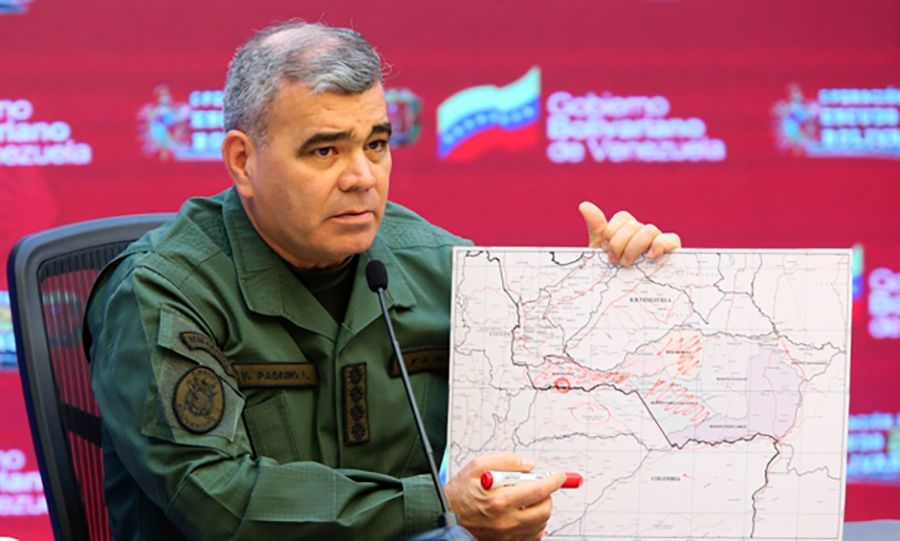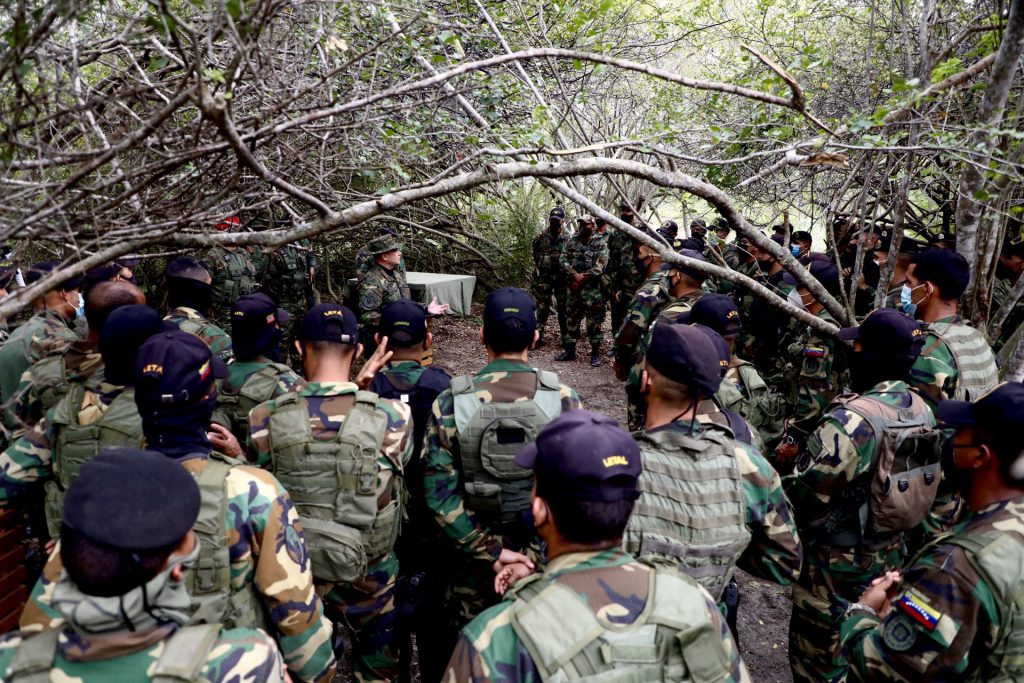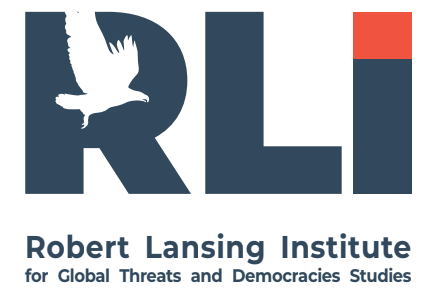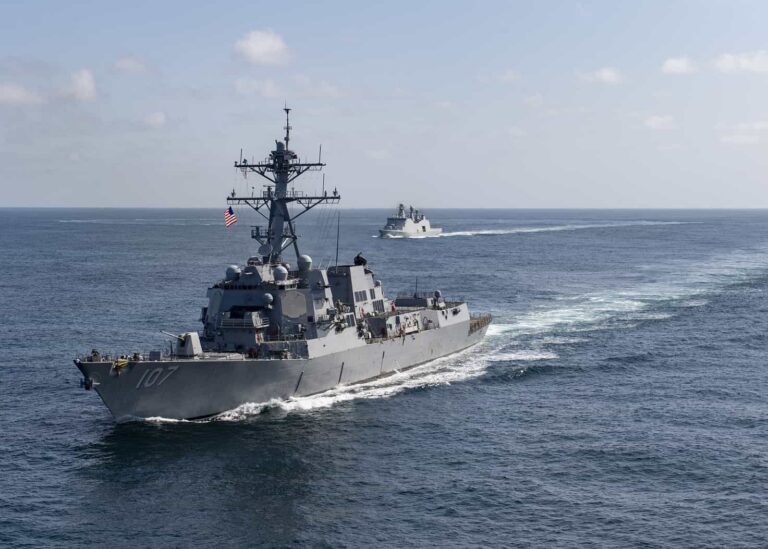1. Probability of Military Action
Assessment: Direct intervention is improbable without a major humanitarian or security crisis that shifts U.S. or regional calculus.
2. Scenarios of Military Operation
A. Limited Intervention (Low-Intensity, Air/Maritime Strikes)
- Aim: Pressure Maduro through precision strikes on military assets, drug trafficking hubs, or strategic infrastructure.
- Method: U.S. or coalition air/missile strikes, naval blockade, cyber operations.
- Probability: Medium if regime crosses “red lines.”
- Risks: Civilian casualties, rallying effect for Maduro, increased Russian/Iranian support.

B. Special Operations / Proxy Strategy
- Aim: Neutralize regime leaders, support local insurgents, protect humanitarian corridors.
- Method: Covert SOF operations, intelligence partnerships with Colombia/Brazil, arming opposition.
- Probability: Medium-high, as this avoids visible escalation.
- Risks: Could spark asymmetric retaliation, destabilize borders.
C. Full Land Operation (Iraq/Afghanistan Model)
- Aim: Regime change, stabilization, democratization.
- Method: U.S./coalition invasion, occupation of Caracas and major cities.
- Probability: Very low (political fatigue in U.S., lessons from Iraq/Afghanistan, lack of allies’ appetite).
- Risks: Massive casualties, insurgency, years-long stabilization effort.
3. Possible Aims of a Military Operation
- Political: Regime change (remove Maduro, install interim democratic government).
- Security: Disrupt narco-trafficking routes, neutralize foreign military presence (Russia, Iran).
- Humanitarian: Create safe zones, stop repression, manage refugee crisis.
- Geostrategic: Reassert U.S. influence in Latin America, deter Chinese and Russian foothold in the Caribbean basin.
4. Can Aims Be Achieved Without a Land Operation?
Yes, partially:
- Air/naval operations could weaken regime capacity and deter external actors.
- Cyber/economic pressure can cripple financial lifelines.
- Regional alliances (OAS, Colombia, Brazil) can isolate Maduro diplomatically and militarily.
But regime change without ground troops is unlikely—as seen in Libya, air campaigns can topple regimes but not stabilize states.
5. Risk of Long-Term Mission (Iraq/Afghanistan Parallel)
- Similarity: Potential insurgency fueled by Chavista loyalists, drug cartels, and foreign advisers (Cuban, Russian, Iranian).
- Difference: Venezuela has weaker ideological insurgency tradition compared to Taliban/ISIS, but its geography (jungles, mountains, porous borders) favors guerrilla warfare.
- Outcome: Any ground campaign risks long-term counterinsurgency, draining U.S. resources and credibility.
Conclusion

- The probability of a full-scale land operation is low; more likely are limited, covert, or proxy-based actions.
- Aims without ground invasion can be partially met (disruption, deterrence, pressure), but not full regime change.
- A long mission akin to Iraq/Afghanistan is possible if foreign troops enter Caracas—as Chavista loyalists, foreign partners, and cartels could sustain years of asymmetric resistance.
Probability vs. Consequence scenario matrix for potential military options in Venezuela:
📎 How to read it (1–10 scales)
- Right = more likely, Up = higher strategic consequence (costs, escalation, instability).
- Top-right (watch-list):
- Covert SOF / Proxy Support (7,6): Most plausible non-overt path; risks cross-border blowback and irregular conflict.
- Limited Air / Precision Strikes (5,7): Possible if “red lines” are crossed; higher escalation/PR risks.
- Top-left (low-prob, high-impact):
- Full Land Invasion / Occupation (2,9): Least likely, but would trigger the longest, most expensive commitment (Iraq/Afghanistan risk).
- Middle band:
- Maritime Interdiction / Blockade (4,6): Coercive pressure; legal/political friction and humanitarian costs.
- Regional Quarantine + Humanitarian Corridors (5,5): Stabilization optics; still invites proxy contestation.
- Bottom-right (likely but contained impact):
- Cyber Ops + Financial Warfare (8,4): Ongoing/expandable; effects accumulate but rarely decisive alone.
Quick takeaways
- Achieving aims without a ground campaign: Partly feasible (cyber/financial warfare + covert/proxy + limited strikes), but state change/stabilization remains unlikely without a ground presence.
- Iraq/Afghanistan risk: Only materializes with occupation or open-ended stabilization. Avoiding that requires tight objectives, regional buy-in, and clear off-ramps.
Probability vs. Consequence scenario matrix for potential military options in Venezuela:
How to read it (1–10 scales)
- Right = more likely, Up = higher strategic consequence (costs, escalation, instability).
- Top-right (watch-list):
- Covert SOF / Proxy Support (7,6): Most plausible non-overt path; risks cross-border blowback and irregular conflict.
- Limited Air / Precision Strikes (5,7): Possible if “red lines” are crossed; higher escalation/PR risks.
- Top-left (low-prob, high-impact):
- Full Land Invasion / Occupation (2,9): Least likely, but would trigger the longest, most expensive commitment (Iraq/Afghanistan risk).
- Middle band:
- Maritime Interdiction / Blockade (4,6): Coercive pressure; legal/political friction and humanitarian costs.
- Regional Quarantine + Humanitarian Corridors (5,5): Stabilization optics; still invites proxy contestation.
- Bottom-right (likely but contained impact):
- Cyber Ops + Financial Warfare (8,4): Ongoing/expandable; effects accumulate but rarely decisive alone.
Quick takeaways
- Achieving aims without a ground campaign: Partly feasible (cyber/financial warfare + covert/proxy + limited strikes), but state change/stabilization remains unlikely without a ground presence.
- Iraq/Afghanistan risk: Only materializes with occupation or open-ended stabilization. Avoiding that requires tight objectives, regional buy-in, and clear off-ramps.
If you want, I can add a policy options ladder (what to do at each escalation step) or a risk heatmap (likelihood × impact × reversibility) to pair with this matrix.
Drug Cartels Potentially Linked to Supporting Maduro’s Regime
1. Cartel de los Soles (“Cartel of the Suns”)
- What is it? An alleged network of high-ranking Venezuelan military officials involved in international drug trafficking, including cocaine, oil smuggling, illegal mining, and money laundering.
- Links to regime: Senior figures—such as Diosdado Cabello, Tareck El Aissami, and potentially Maduro himself—are frequently mentioned in official U.S. designations and analyses as key actors.
- International response: The Cartel has been designated a terrorist organization by multiple countries including the U.S., Argentina, Ecuador, Paraguay, and the Dominican Republic.
2. Tren de Aragua
- What is it? An organized criminal gang originating from a Venezuelan prison. It engages in drug trafficking, human smuggling, extortion, kidnapping, and other illicit activity.
- Government connection: The U.S. has labeled it a Foreign Terrorist Organization and linked it to Maduro via statements alleging his control.
3. Sinaloa Cartel - Relevance: Though based in Mexico, the Sinaloa Cartel is said to have close ties to the Cartel de los Soles and Tren de Aragua, suggesting a broader criminal network.
\
4. Corrupt State Actors & Officials
- Who: Former intelligence chief Hugo Carvajal (alias “El Pollo”) pleaded guilty in U.S. court to narco-terrorism and weapons charges. He is linked directly to Cartel de los Soles.
- Institutional support: U.S. sanctions and indictments have targeted multiple current and former officials for trafficking schemes used to weaponize cocaine against U.S. institutions and society.
5. La Guajira Cartel - Overview: A Colombian-Venezuelan criminal group active in Zulia and surrounding areas. It traffics drugs, contraband, arms, minerals, and maintains alliances with the Cartel de los Soles.
| Group | Relationship to Maduro Regime | US/Intl Designation |
| Cartel de los Soles | Alleged leadership by Venezuelan military officials and close associates of Maduro | Terrorist org in multiple countries |
| Tren de Aragua | A criminal gang that operates with regime tolerance | U.S. Foreign Terrorist Organization |
| Sinaloa Cartel | Allied with regime-backed networks | Terrorist org designation |
| Corrupt State Officials | Framework enablers (Carvajal, others) | Indicted/sanctioned by U.S. |
| La Guajira Cartel | Criminal ally, cross-border operations | Not designated, but aligned with Cartel de los Soles |
Analysis & Implications
- Maduro’s regime appears to leverage state-linked criminal networks as both revenue streams and security mechanisms, effectively blurring lines between governance and narco-terror operations.
- This deep collusion impairs state legitimacy, invites sanctions, and justifies extrajudicial pressure from actors like the U.S. to combat narco-state threats.
- The Cartel de los Soles stands as the regime’s central criminal apparatus, with others functioning as affiliates or regional extensions.
Who might come to power in the event of Nicolás Maduro’s removal—whether through internal coup, popular uprising, or foreign intervention. It covers key factions, their interests, and scenarios of transition.
1. Scenario Framework
Let’s consider three collapse scenarios:
- A. Military Coup (regime insiders oust Maduro)
- B. Popular Uprising (mass mobilization topples regime)
- C. Foreign-Backed Regime-Change (external intervention or pressure)
2. Key Power Centers & Potential Successors
Military and Internal Security Establishment
- General Vladimir Padrino López (Defense Minister): Highly visible, controls army apparatus. He’s the most institutionally powerful alternative if arrest or a palace coup occurs.
- Tareck El Aissami (Vice President, former intelligence chief): Deep ties to security apparatus and trafficking networks. Could enter as military-backed caretaker.
- Diosdado Cabello (PSUV strongman, National Constituent Assembly chairman): Commands internal party structure, smuggling networks, and regional “Cartel de los Soles” links.
Likely outcome in Scenario A: A transition led by military-intelligence figures, possibly accompanied by interim juntas or “transitional councils.”
Opposition Leadership
- Juan Guaidó (Interim-President-designate, recognized by many Western governments): Legitimacy as constitutional placeholder, but lacks coercive enforcement.
- Maria Corina Machado (Hardline opposition leader): Popular hard-right nationalist, supportive of stronger military or external involvement.
- Other centrist figures: Leopoldo López (exiled), or moderates brokered for legitimacy balance.
Possible in Scenario B or hybrid transitional bodies: If a social uprising succeeds, a coalition government with Guaidó or Machado may lead a temporary caretaker period.
3. Transition Scenarios Mapped to Actors
| Scenario | Likely Power Broker(s) | Path to Transition |
| A. Military Coup | Padrino López, Aissami, Cabello | Regime collapse, junta formation, caretaker rule |
| B. Popular Uprising | Guaidó, Machado, council figures | Mass protests, interim transitional government |
| C. Foreign-backed Regime Change | Guaidó, backed by U.S./Allies | External pressure, sanctions, potential intervention |
| D. Hybrid Civil-Military Coalition | Guaidó + institutional reformists | Elite consensus with military acquiescence |
4. Strategic Considerations & Risks
- Legitimacy vs. Coercion: Military successors bring enforcement power but limited popular legitimacy. Opposition leaders have legitimacy but no coercive force.
- Fragment Risk: Internal divides within junta or opposition coalitions could lead to fragmentation.
- Cartel Influence: Criminal networks may shift allegiance to whoever wins; they could act as spoilers or kingmakers.
- International Recognition: A caretaker government under Guaidó would likely be immediately recognized by the U.S. and their allies, amplifying external legitimacy—but possibly undermining internal stability.
5. Bottom Line
- In a coup scenario (A), expect military or intelligence figures (Padrino, Aissami, Cabello) to rise.
- In a popular uprising (B), Guaidó or Machado could lead a transitional coalition.
- In a foreign-backed scenario (C), Guaidó is best-positioned, backed by Western recognition.
- A hybrid path (D) could emerge if factions across society and elite find compromise in order to stabilize the country.
5. Bottom Line
- In a coup scenario (A), expect military or intelligence figures (Padrino, Aissami, Cabello) to rise.
- In a popular uprising (B), Guaidó or Machado could lead a transitional coalition.
- In a foreign-backed scenario (C), Guaidó is best-positioned, backed by Western recognition.
- A hybrid path (D) could emerge if factions across society and elite find compromise in order to stabilize the country.
Would you like me to create a visual “succession paths” flowchart showing how different scenarios branch into respective leaders and transitional structures?
- Starting point: “Maduro Overthrown” at the top.
- Four scenarios branch out:
- Military Coup → Padrino López, Aissami, Cabello.
- Popular Uprising → Opposition leaders (Guaidó, Machado).
- Foreign-Backed → Guaidó caretaker government with international recognition.
- Hybrid Coalition → Consensus transitional council.
Insights
- Military coup scenario is most plausible in the short-term, since the armed forces remain the key power broker.
- Opposition-only scenario needs mass mobilization + military neutrality.
- Foreign-backed scenario would strengthen Guaidó, but risks sovereignty backlash.
- Hybrid coalition offers the most stability, combining legitimacy with coercive power.
Here’s the flowchart I prepared to map the potential power transitions in Venezuela after Maduro’s overthrow:
📎 Download: venezuela_succession_flowchart.png
How to read it
- Starting point: “Maduro Overthrown” at the top.
- Four scenarios branch out:
- Military Coup → Padrino López, Aissami, Cabello.
- Popular Uprising → Opposition leaders (Guaidó, Machado).
- Foreign-Backed → Guaidó caretaker government with international recognition.
- Hybrid Coalition → Consensus transitional council.
Insights
- Military coup scenario is most plausible in the short-term, since the armed forces remain the key power broker.
- Opposition-only scenario needs mass mobilization + military neutrality.
- Foreign-backed scenario would strengthen Guaidó, but risks sovereignty backlash.
- Hybrid coalition offers the most stability, combining legitimacy with coercive power.

More on this story: Venezuela and Guyana: the military conflict possible

More on this story: Russia uses Venezuela as foothold to stage operations against Brazil

More on this story: Government and paramilitary groups behind human rights violation in Venezuela





